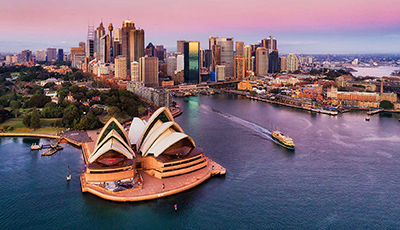
More than 100,000 Afghans are estimated to have applied for a humanitarian visa to come to Australia since the fall of Kabul, officials have revealed to a Senate hearing.
The figure demonstrates the overwhelming demand from Afghans seeking protection still left behind following the Australian government’s evacuation mission in August.
Speaking before the Senate committee into Australia’s involvement in Afghanistan, Department of Home Affairs official David Wilden described the inundation of visa requests witnessed in recent weeks.
“We have 26,000 applications which is well in excess of 100,000 people applying,” he told the committee.
“Everyone coming on these visas will be a humanitarian entrant.”
The reason for the discrepancy is most of these visa applications have multiple people attached to them – usually close family members.
The committee also heard some people had been unwilling to depart Kabul because they were still trying to get visas for family members who they wanted to bring out with them.
Director and Principal Solicitor of the Refugee Advice and Casework Service Sarah Dale said the demand demonstrated the desperate need for help from those seeking protection in Afghanistan.
“It demonstrates the level of absolute horror that people are experiencing in Afghanistan – it demonstrates that people are desperate to find a safe place,” she told SBS News.
“They are desperate to find a pathway to safety for their families and … many people have that connection to Australia.”
The federal government has promised to provide an initial 3,000 humanitarian spots to Afghan nationals fleeing the country, describing this figure as a “floor” and not a “ceiling”.
But the total still sits within Australia’s humanitarian annual program limit of around 13,750 places, raising concerns over whether the allocation will go far enough towards meeting the surging demand.
The Senate hearing also confirmed that at least 286 Australian citizens and permanent residents who had sought assistance from the Australian government remain stranded in Afghanistan.
The figure is based on individuals who have directly registered with the Department of Foreign Affairs.
The Australian government previously avoided providing an estimate of those in Afghanistan seeking to come to Australia, citing security concerns.
This drew the ire of Labor’s foreign affairs spokesperson Penny Wong during the hearing.
“Why is it you can not tell the Australian public how many people we left behind – you can’t even give us an estimate?” Senator Wong said.
Mr Wilden said many people who had sought protection from Australia had already left Afghanistan, including visa holders fleeing to the United States, United Kingdom, Europe and other surrounding countries.
“It is not as simple as left behind in country versus who holds a valid visa to Australia,” he said.
The inquiry’s focus also centres on applying scrutiny to the Australian government’s evacuation efforts before the Taliban’s seizure of Kabul.
Australia’s embassy in Afghanistan’s capital was formally closed on 28 May, with the final diplomats, military, and intelligence officers leaving the country in June.
The exit came ahead of the Taliban’s takeover in mid-August.
But Chief of the Defence Force Angus Campbell defended the government’s decision not to arrange military evacuation flights for Afghan personnel before Kabul’s seizure.
“In July there was no military reason for an evacuation operation to be conducted by the ADF,” he told the committee.
Officials argued that before this point, commercial flights had been satisfying the demand for evacuations from the country.
They pointed to data showing levelling demand for visas from former locally-engaged employees in the months leading up to the capital’s takeover.
Department of Defence official Hugh Jeffrey also said the former Afghan government had been “sensitive” to the potential signal that could be sent by evacuations.
“There was concern about countries conducting visible evacuation efforts,” he said.
But humanitarian advocate Dr Kay Danes from GAP Veterans and Legal Services earlier told the committee the federal government had failed to do enough before the situation deteriorated.
“We left all those people behind unnecessarily – I don’t think that’s morally right,” she said.
“We had an opportunity to do something and we didn’t.”
Officials said a decision to close the embassy in Kabul “came into sharper focus” following an announcement from US President Joe Biden of his nation’s withdrawal from the region.
The Australian government evacuated around 4,100 people from Afghanistan’s capital during its evacuation mission as tens of thousands attempted to flee the Taliban-controlled capital.
DFAT’s Daniel Sloper said while the mission had largely been a success the government was “very conscious” that other Australians and visa holders had been left behind.
Those who served with allied forces and religious minorities unable to secure evacuation flights have continued to express fears of reprisal attacks from the Taliban regime.
Several humanitarian organisations have pressed the government to commit to an additional humanitarian intake of at least 20,000 Afghans in line with the pledges of Canada and the United Kingdom over several years
